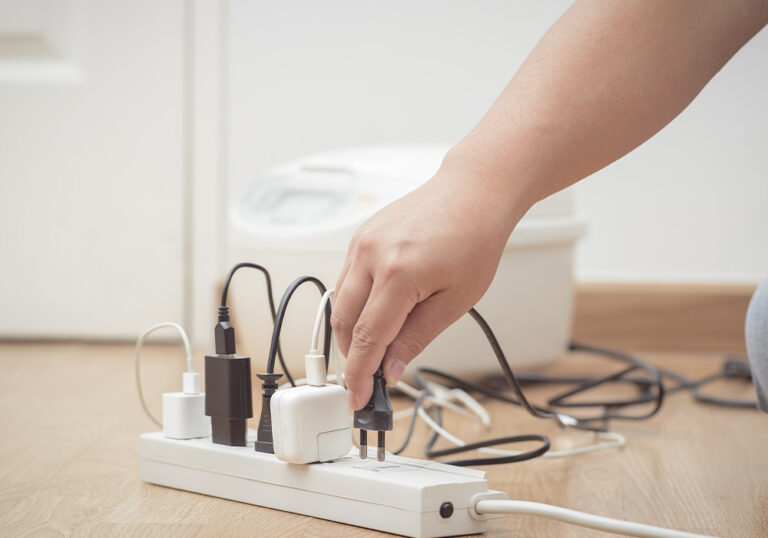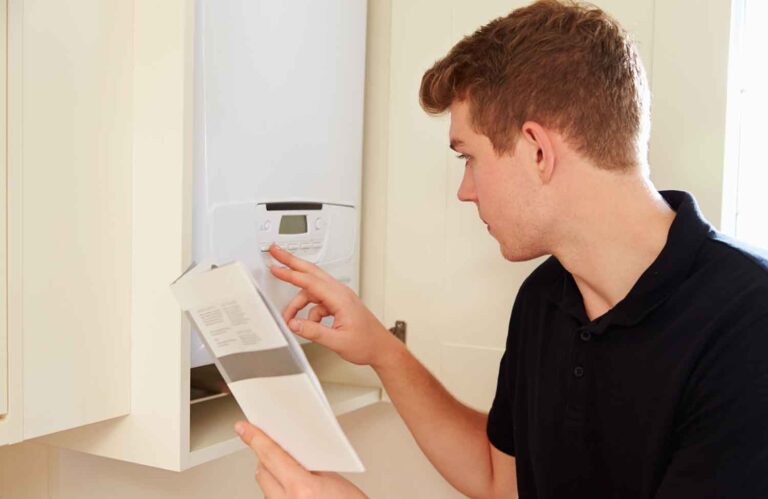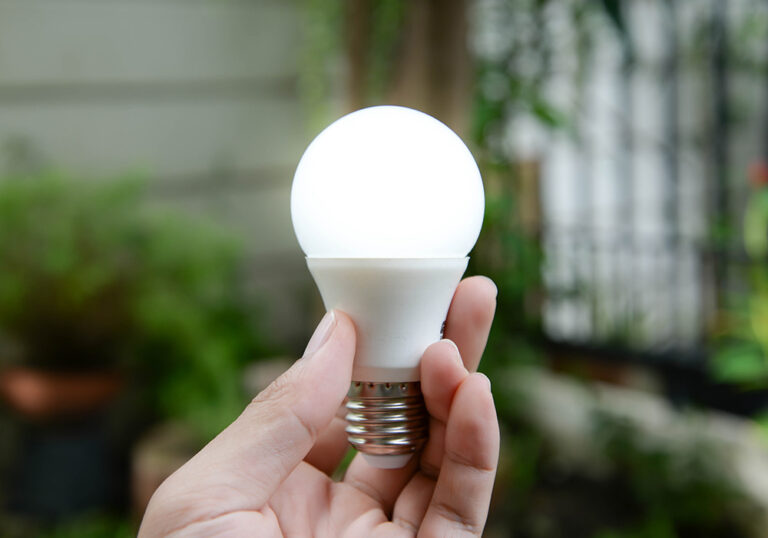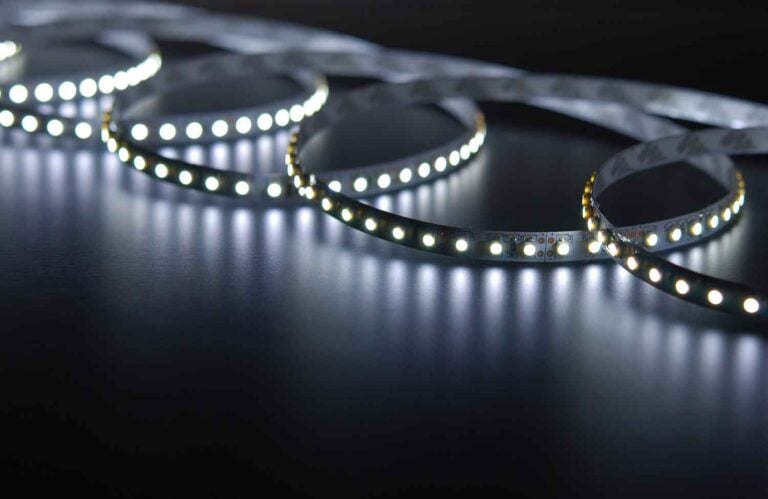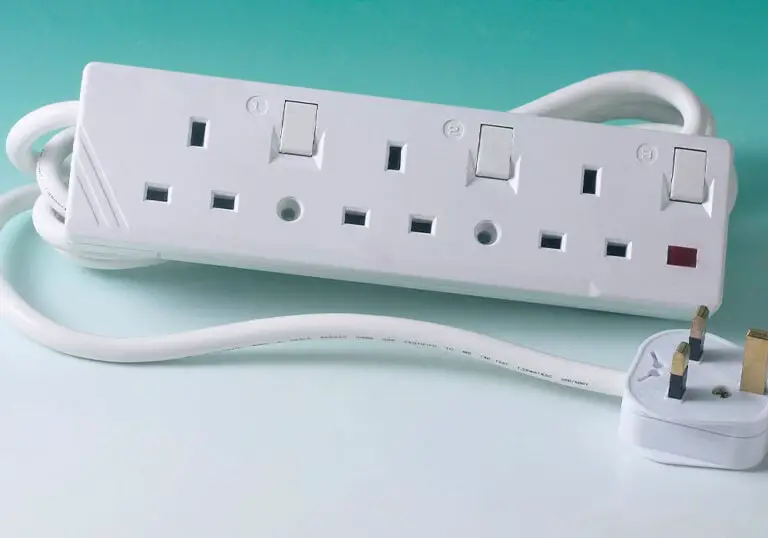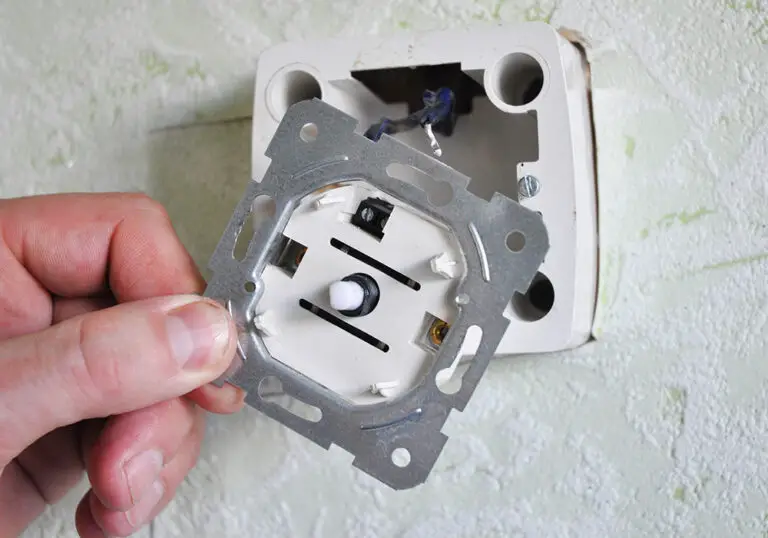Will A Surge Protector Keep A Breaker From Tripping?
Surge protectors and circuit breakers are both essential devices in electrical systems, designed to maintain safety and prevent damage to your electronic devices. While circuit breakers help to prevent electrical fires by interrupting current flow when a fault is detected, surge protectors protect your appliances from power surges or voltage spikes. Many people wonder if a surge protector can prevent a circuit breaker from tripping, and that is exactly what we will discuss in this article.
A common misconception is that surge protectors can stop a breaker from tripping. However, it is important to know that surge protectors and circuit breakers serve different functions. While a surge protector shields your appliances from power surges, it does not necessarily prevent a breaker from tripping. Tripping occurs when there is a fault in the circuit or when it is overloaded, and the circuit breaker is designed to disconnect the power supply in response to such situations.
Understanding how circuit breakers and surge protectors work individually and in conjunction with each other is crucial for ensuring the safety of your electronics and electrical system. By selecting the right surge protector, you can protect your appliances from damage and minimise the risk of breaker trips due to power surges, but it is important to remember that a surge protector will not entirely prevent a breaker from tripping.
Key Takeaways
- Circuit breakers and surge protectors serve different purposes in an electrical system.
- A surge protector does not necessarily prevent a breaker from tripping.
- Choosing the appropriate surge protector can help minimise the risk of breaker trips due to power surges.
Understanding Circuit Breakers
Circuit breakers are essential safety devices that protect your home and electronic devices from electrical issues. They monitor the flow of electricity in a circuit and are designed to automatically shut off power when the current exceeds a specified limit. This can happen due to various reasons, including overloading, short circuits, or faulty wiring.
In a typical household, several circuit breakers are installed in an electrical panel, each responsible for a specific area or set of electrical devices. If a problem arises in any of these circuits, the corresponding breaker will trip, shutting off power to that section while the rest of the home remains unaffected.
While surge protectors and circuit breakers might seem similar, they serve different purposes. Surge protectors primarily safeguard your electronics from voltage spikes and power surges caused by lightning strikes, power outages or faulty electrical components. They are designed to absorb or divert excess voltage, preventing it from reaching your devices and potentially causing damage.
On the other hand, circuit breakers are not designed to handle voltage spikes or surges, but rather to control current flow and prevent electrical fires or damage due to overloading or short circuits. Installing a surge protector can increase the safety of your electronic devices, but it will not directly prevent a breaker from tripping.
In conclusion, while both surge protectors and circuit breakers contribute to overall electrical safety, they serve different functions and should be used in conjunction with each other to ensure the best protection for your electronic devices and your home.
Role of a Surge Protector
A surge protector is a vital device that safeguards your electronic appliances against high-voltage power surges. These surges can be caused by various factors like lightning strikes, power grid fluctuations, or even issues with your home’s electrical system.
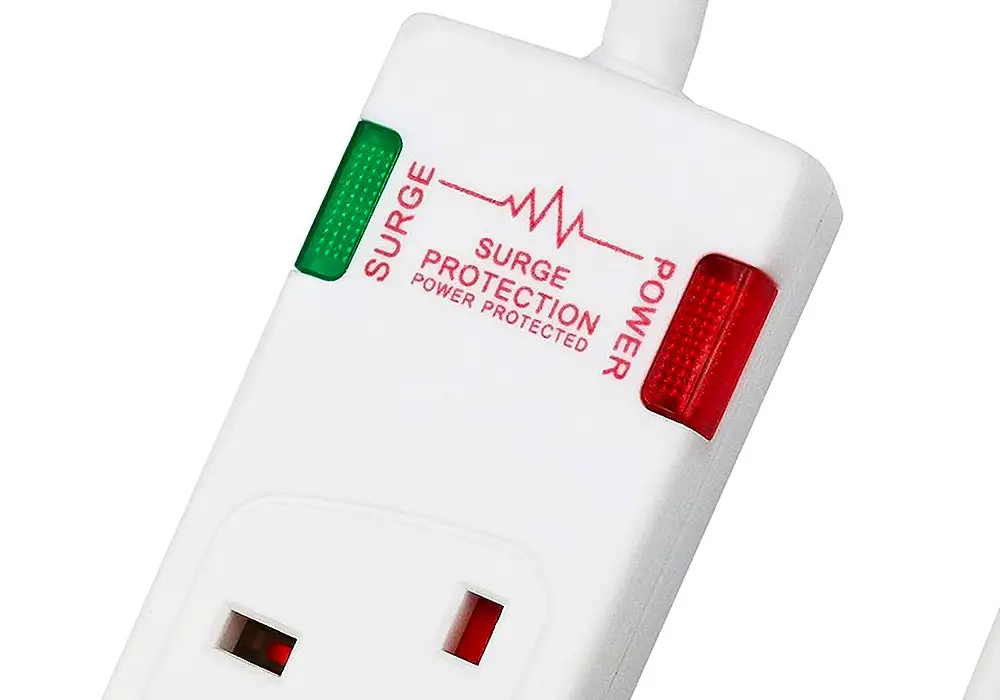
The primary function of a surge protector is to detect any sudden increase in voltage and safely divert the excess voltage to the ground. This prevents your electronic devices, such as your computer, television set, or air conditioning system, from getting damaged due to a voltage spike.
It is essential to understand that a surge protector is not the same as a circuit breaker. While both devices serve different purposes, they work together to keep your electrical systems safe. A circuit breaker is designed to prevent electrical overload and short circuits by tripping and cutting off the power supply when the current flow exceeds a specific limit.
Surge protectors come in various types and capacities, depending on the devices you need to protect. For example, there are surge protectors made specifically for computers, home theatres, or office equipment. When selecting a surge protector, consider the number of outlets required, the device’s clamping voltage, and its energy absorption capacity.
Now, you might wonder if a surge protector can prevent a circuit breaker from tripping. The straightforward answer is no. A surge protector is designed to protect your devices from high-voltage surges, while a circuit breaker is responsible for preventing electrical overloads and short circuits. Therefore, a surge protector does not impact the function of a circuit breaker, and it cannot keep a breaker from tripping during an overload or short circuit.
Will a Surge Protector Prevent a Breaker Trip?
A surge protector and a circuit breaker are two distinct devices with different functions. Understanding their roles is crucial for grasping how they work together. While a surge protector safeguards your electronic devices from power surges and voltage spikes, a circuit breaker controls the flow of electricity in a circuit. If it detects an abnormally high current, the circuit breaker trips to prevent damage and potential fires.
Now, you might think that using a surge protector would stop a breaker from tripping, but unfortunately, that’s not the case. A surge protector is designed to provide protection from high voltage peaks by creating a short circuit between the hot and neutral wires. However, this function doesn’t guarantee preventing a breaker trip.
In fact, a surge protector’s primary purpose is to protect your electronics from damage due to unexpected voltage spikes. It is not specifically designed to prevent circuit breakers from tripping. Additionally, some factors, such as overloaded circuits, faulty wiring, or damaged electronic devices, can still cause the breaker to trip, regardless of whether a surge protector is in place or not.
To minimise the chances of a breaker trip, it is essential to ensure that your electrical wiring and connections are in good condition, and you distribute electrical loads evenly across circuits. Moreover, it is recommended to use surge protectors for added protection for your devices, but bear in mind that this is not a guaranteed solution for preventing breaker trips.
In conclusion, a surge protector can offer additional protection for your electronic devices but will not necessarily stop a circuit breaker from tripping.
Possible Reasons Behind Circuit Breakers Tripping
There are various reasons why circuit breakers might trip. Here are some prime factors that could lead to this issue:
Overloads: Overloads occur when you put a greater electrical demand on a particular circuit than it’s capable of producing or if you have too many light fixtures or appliances running simultaneously. This can cause the circuit breaker to trip in order to prevent potential damage to your electrical system and appliances.
Short circuits: A short circuit happens when a hot wire comes into contact with a neutral or ground wire. This causes a surge in electrical current that can trip the circuit breaker as a safety measure. Faulty wiring, damaged insulation, or loose connections can contribute to a short circuit.
Ground faults: Ground faults are similar to short circuits but involve a hot wire coming into contact with a grounded object or surface. These occur in damp areas like bathrooms or kitchens and can cause circuit breakers to trip to prevent electrocution hazards.
Voltage spikes and surges: A surge protector is specifically designed to limit voltage spikes and surges that can occur in an electrical system. While a surge protector might not directly prevent a circuit breaker from tripping, it can help protect your electrical devices from being damaged by unexpected voltage fluctuations. However, in some cases, the additional short that a surge protector creates could potentially cause a circuit breaker to trip.
To mitigate these issues, you could consider distributing your appliances across different circuits to prevent overloads and ensure that your wiring is checked and repaired by a qualified electrician.
Surge Protector and Circuit Breaker Interactions
A surge protector and a circuit breaker work differently in handling voltage and current, respectively. While they both provide protection to your electrical devices, understanding their interactions is essential for the efficient functioning and safety of your circuits.
Surge protectors guard your equipment against voltage spikes that could potentially cause damage to your devices. They achieve this by limiting power along the electrical line, effectively preventing a surge in voltage from entering your appliance. This regulation ensures that only the appropriate levels of voltage are getting through to your devices.
On the other hand, circuit breakers are designed to prevent electrical overloads in a circuit. Their primary function is to detect when a circuit is drawing more current than it should, and then interrupt the flow of electricity by tripping. This disconnection acts as a safety measure, preventing overheating, fires, and damage to your appliances.
Now, when considering if a surge protector can keep a breaker from tripping, you should be aware that there is a connection between the two devices. In the event of a voltage spike that originates from a fault in the surge protector, it can cause a short in the electric circuit. This short may lead the circuit breaker to trip, effectively protecting your equipment from further damage.
That said, it is essential to use surge protectors alongside properly sized circuit breakers. The breaker must be compatible with the surge protector’s wire size and electrical panel ratings. For example, if your surge protector has 10 AWG wires, you should pair it with a 30A rated breaker. Additionally, the breaker’s interrupt rating and voltage rating must be suitable for the electrical panel. Doing so will ensure that your system operates safely and effectively.
In summary, while a surge protector cannot explicitly prevent a breaker from tripping, it plays a crucial role in maintaining the safety of your electrical devices by controlling voltage spikes. Proper pairing of surge protectors and circuit breakers will ensure optimal protection for your equipment, while minimising the likelihood of nuisance tripping.
How Surge Protectors Influence Breaker Performance
Surge protectors and circuit breakers serve different purposes in your electrical system. While the primary function of a surge protector is to safeguard your electronic devices from high-voltage power surges, a circuit breaker is designed to protect your home’s wiring and electrical system by tripping when an abnormally high amount of current flows through the circuit.
A surge protector works by limiting voltage spikes and surges that can occur within an electrical system. When a voltage surge or spike occurs, the surge protector creates a short between the neutral and line, quickly cutting off the high voltage and preventing damage to your devices. However, creating this short can sometimes cause a circuit breaker to trip as it detects an excessive amount of current flow.
It is important to note that despite their ability to handle voltage surges, surge protectors are not intended to replace the functions of a circuit breaker. They cannot prevent a circuit breaker from tripping due to excessive current, as they are designed for different purposes. Additionally, surge protectors may not always prevent nuisance trips in AFCI breakers, as these are designed specifically to protect your home from series or shorting arc faults.
When selecting a surge protector, it is essential to follow the manufacturer’s installation instructions and ensure compatibility with your electrical system. While the two devices can work together to provide comprehensive protection for your electronic devices and your home’s electrical system, they must be utilised correctly to function efficiently.
In summary, surge protectors and circuit breakers each play a crucial role in protecting your home and devices from electrical hazards. While a surge protector helps to limit voltage surges and spikes, it cannot guarantee that a breaker will not trip due to other factors like excessive current or short circuits. Ensuring that your electrical system is appropriately maintained and utilising surge protectors and circuit breakers in line with their intended purposes is the key in achieving maximum protection for your home and devices.
Surge Protector Features that Safeguard Breakers
A surge protector is an essential device that helps protect your electronic devices from power surges, voltage spikes, and line noise. It serves two primary purposes: to limit voltage spikes that could damage sensitive equipment and to prevent fires caused by electrical faults.
Protection against voltage spikes: Surge protectors use a component called a metal oxide varistor (MOV) to divert excess voltage away from connected devices. When a voltage spike occurs, the MOV absorbs the excess energy and safely diverts it to the ground, protecting your devices from damage.
Joule rating: The joule rating on a surge protector indicates its ability to absorb and dissipate energy. A higher joule rating represents better protection and a longer lifespan for the device. When selecting a surge protector, you should look for one with a joule rating that matches your needs.
Response time: A surge protector’s response time refers to how quickly it reacts to a surge event. A faster response time means the surge protector will act quicker to divert excess voltage, minimising potential damage to your devices. Ideally, you should choose a surge protector with a response time of 1 nanosecond or less.
It’s important to note that while surge protectors can help protect your devices from voltage spikes and power surges, they do not directly prevent circuit breaker tripping. A circuit breaker’s purpose is to cut off power when an abnormally high amount of current flows through the circuit, which could be due to an overload or short circuit. Thus, while a surge protector can indirectly contribute to a stable electrical system, it does not keep breaker from tripping in itself. However, having a surge protector in place can help reduce the likelihood of electrical issues, ultimately promoting overall safety within your home or office.
Circuit Breaker Vs. Surge Protector
To understand whether a surge protector can keep a breaker from tripping, it’s important to differentiate between a circuit breaker and a surge protector. Both components have critical functions in protecting your electrical devices and system, but they operate in different ways.
A circuit breaker primarily safeguards your home’s electrical wiring system from catching fire due to excessive current flow. They are a mandatory part of your home’s electrical system, as required by the National Electrical Code. When a circuit becomes overloaded, a circuit breaker is designed to shut off the power supply, effectively preventing potential hazards. If a circuit breaker breaks, it must be replaced immediately to maintain safety.
On the other hand, a surge protector focuses on regulating voltage by limiting the amount of power coming into your equipment. They primarily serve two purposes, which include protecting your devices and appliances from power surges or voltage spikes. Surge protectors work with the energy of electric fields, ensuring that your devices are not damaged by sudden voltage fluctuations.
Although both components offer a level of protection, they are designed to handle different electrical issues. A circuit breaker is responsible for protecting your home’s wiring and electrical system from overloading, while a surge protector takes care of individual devices and appliances, preventing damage from power surges.
It is worth noting that a surge protector alone cannot prevent a breaker from tripping, as it does not control the current flow in the electrical system. However, using a surge protector can provide an added layer of protection for your devices and appliances in case of unexpected voltage fluctuations, ensuring their safety and longevity.
Choosing the Right Surge Protector to Avoid Breaker Trips
When selecting a surge protector to prevent breaker trips, it’s essential to consider key parameters. This will ensure you choose the right device to protect your electrical system, devices, and equipment effectively.
Firstly, understand the specific types of electrical surges your property may face. Voltage surges can occur due to a range of factors, such as lightning strikes, power grid fluctuations, or electrical equipment malfunctions.
Next, think about the devices and equipment you want to protect. Sensitive electronic equipment, like computers and home entertainment systems, typically require more advanced surge protection.
To choose the right surge protector, focus on these three primary factors:
- Joule rating: The joule rating indicates the energy absorption capacity of the surge protector. The higher the rating, the more protection it can provide. Opt for surge protectors with higher joule ratings for better protection against electrical surges.
- Response time: A shorter response time means the surge protector will act faster in suppressing voltage surges. Look for surge protectors with a response time of less than one nanosecond to ensure prompt and effective action.
- UL rating: The Underwriters Laboratories (UL) rating reflects the safety and performance of a surge protector, with UL 1449 being the standard certification for these devices. Make sure your chosen surge protector has the UL 1449 rating for optimal safety and reliability.
Finally, ensure your surge protector has enough sockets to accommodate all the devices you want to protect. It’s also a good idea to choose one with a warranty, as this provides an extra layer of security should something go wrong.
By considering these factors, you can select the right surge protector designed to minimise the risk of breaker trips while keeping your electrical system and devices safe. Just remember that a surge protector cannot entirely prevent breaker trips, as circuit breakers are primarily designed to protect your electrical system from prolonged exposure to high currents, not just surges.

